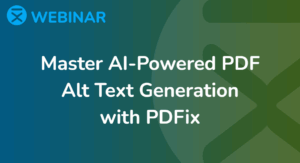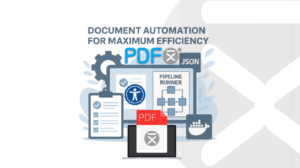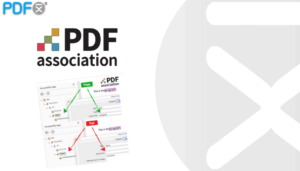Join us for an insightful webinar where we’ll guide you through seamlessly integrating PDF accessibility into your workflow with PDFix SDK – explore a predefined set of actions designed to address common accessibility challenges and show you how to programmatically incorporate them into simple, efficient processes. Let’s watch!
Key Takeaways from the Webinar
In our recent webinar, we demonstrated how PDFix SDK streamlines PDF accessibility compliance through automation. This post summarizes the key insights, actionable steps, and answers to common questions about automated PDF remediation and actionable insights to help you implement these solutions.
Why Automate PDF Accessibility?
Manual PDF/UA compliance fixes are time-consuming. With PDFix Accessibility API, you can:
- Reduce PDF remediation time from hours to minutes
- Process batches of documents effortlessly
- Ensure consistency across PDF/UA & WCAG standards
- Support multiple platforms Windows, macOS, Linux
Download PDFix SDK to start automating today.
How PDFix Automates Accessibility
Our PDF accessibility automation example available on GitHub covers:
1. Auto-tagging PDFs with PDFix SDK
- Automatically tags an untagged PDF document
- No templates or configs needed – just a few lines of code
- For more complex layouts, check out Auto-tag PDFs with PDFix Templates
2. Automated Validation with VeraPDF
After tagging, the next step is validation to identify remaining compliance issues:
- VeraPDF checks documents against PDF/UA standards
- Generates XML and HTML reports for detailed issue tracking
- Maps errors to specific PDF/UA clauses as missing document language, incorrect metadata, etc.
📌 Each issue is mapped to a specific clause number from the PDF/UA standard, making it easy to determine which automated fix is required.
4. Applying Automated Fixes
The script builds a JSON configuration of fix actions, executed via PDFix Desktop or SDK. The script:
- Parses the XML and HTML validation report
- Identifies failed clauses (e.g. Clause 7.1 – Document Title)
- Applies predefined fixes using PDFix SDK
- Outputs a compliant PDF document
Why Use PDFix SDK for PDF Accessibility Automation?
✔ No deep technical expertise required
✔ Works across platforms: Windows, macOS, Linux
✔ Batch processing for large document collections
✔ Reduces remediation time from hours to minutes
Questions & Answers
1. Is the automation tool available for other programming languages? What platforms are supported?
Yes, the PDFix SDK supports multiple programming languages including Python, C++, Java, .NET, and JavaScript. It is cross-platform and runs on Windows, Linux, and macOS.
2. How can I determine the right action and parameters to address other validation clauses?
You can explore the list of Batch Actions available under documentation. While we currently don’t link PDF standard clause numbers directly to actions, we’re working on adding this mapping. For now, feel free to contact us for guidance on addressing specific issues.
3. What is the PDF page limit that PDFix SDK can handle?
There is no hard limit. We’ve successfully processed PDF files with over 12,000 pages. Performance may depend on system resources, but generally, the SDK can handle large documents efficiently. For monitoring long operations like auto-tagging, progress monitoring can be implemented – contact us for an example.
4. Is there sample code for creating bookmarks and a table of contents?
Yes! Use the Create Bookmarks action in the PDFix Actions. If your PDF has headings in its structure, this action will auto-generate bookmarks. Check our documentation for implementation details.
5. Can PDFs be exported to XML, edited, and reconstructed?
PDFix SDK doesn’t support PDF reconstruction from XML. Instead, it provides direct PDF editing functions – modifying content, links, page assembly. For specific needs, review our GitHub examples or email us for guidance.
6. Which PDFix SDK license is needed for Python-based accessibility fixes?
Accessibility features, including auto-tagging, require the PDFix SDK Enterprise license.
7. Does automation remove existing tags or add new ones?
The auto-tag function removes the entire existing structure by default. However, for fixing pre-tagged documents – for example those from InDesign – refer to our webinar, which covers custom remediation workflows.
8. Can the script process an entire directory of files?
Absolutely! Modify the script to iterate through all files in a directory—it can handle any number of PDFs.
Start Automating Now
- Download PDFix SDK
- Get the Sample Project on Github
- Get to know PDFix Accessibility Actions
- Watch the full WEBINAR recording


